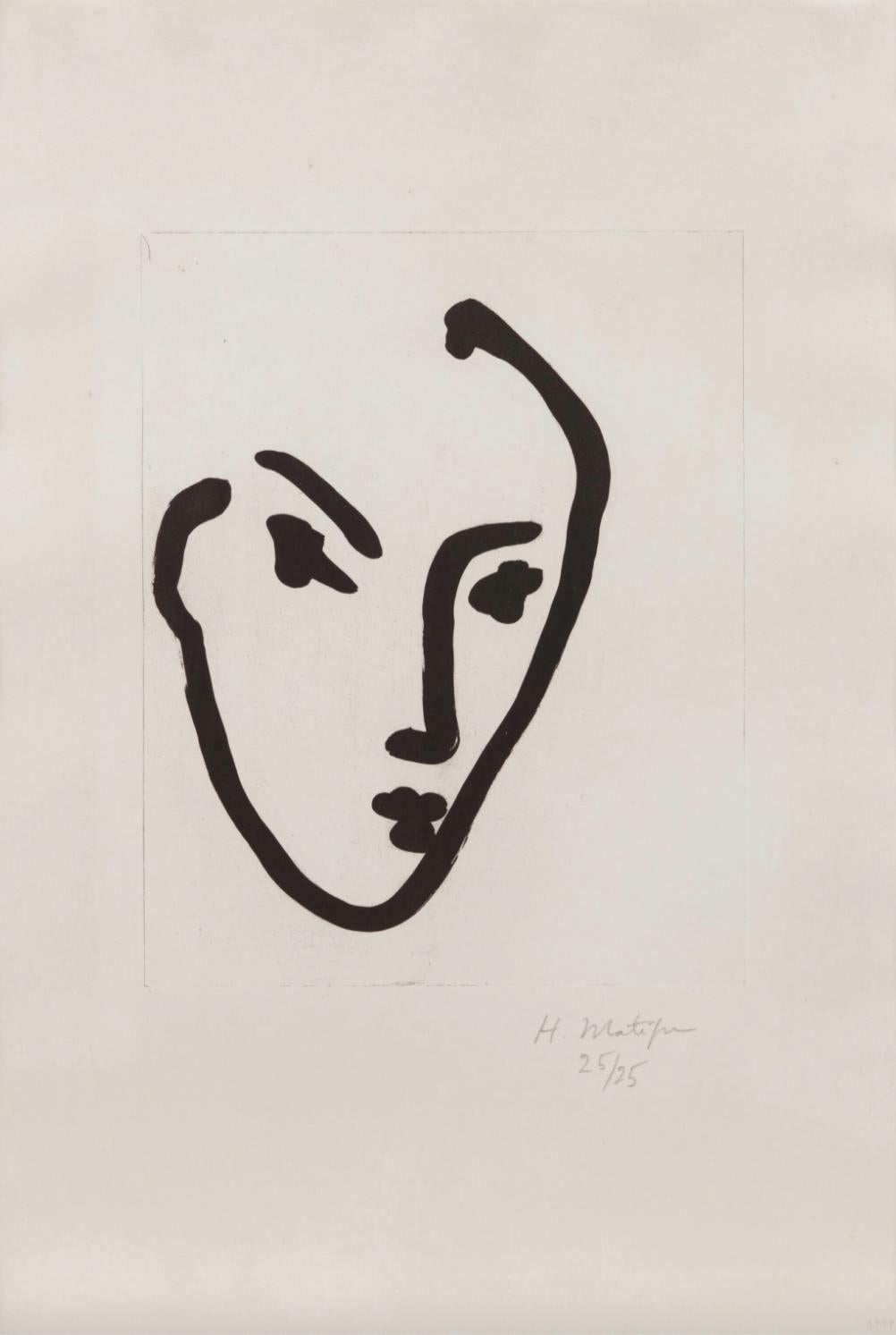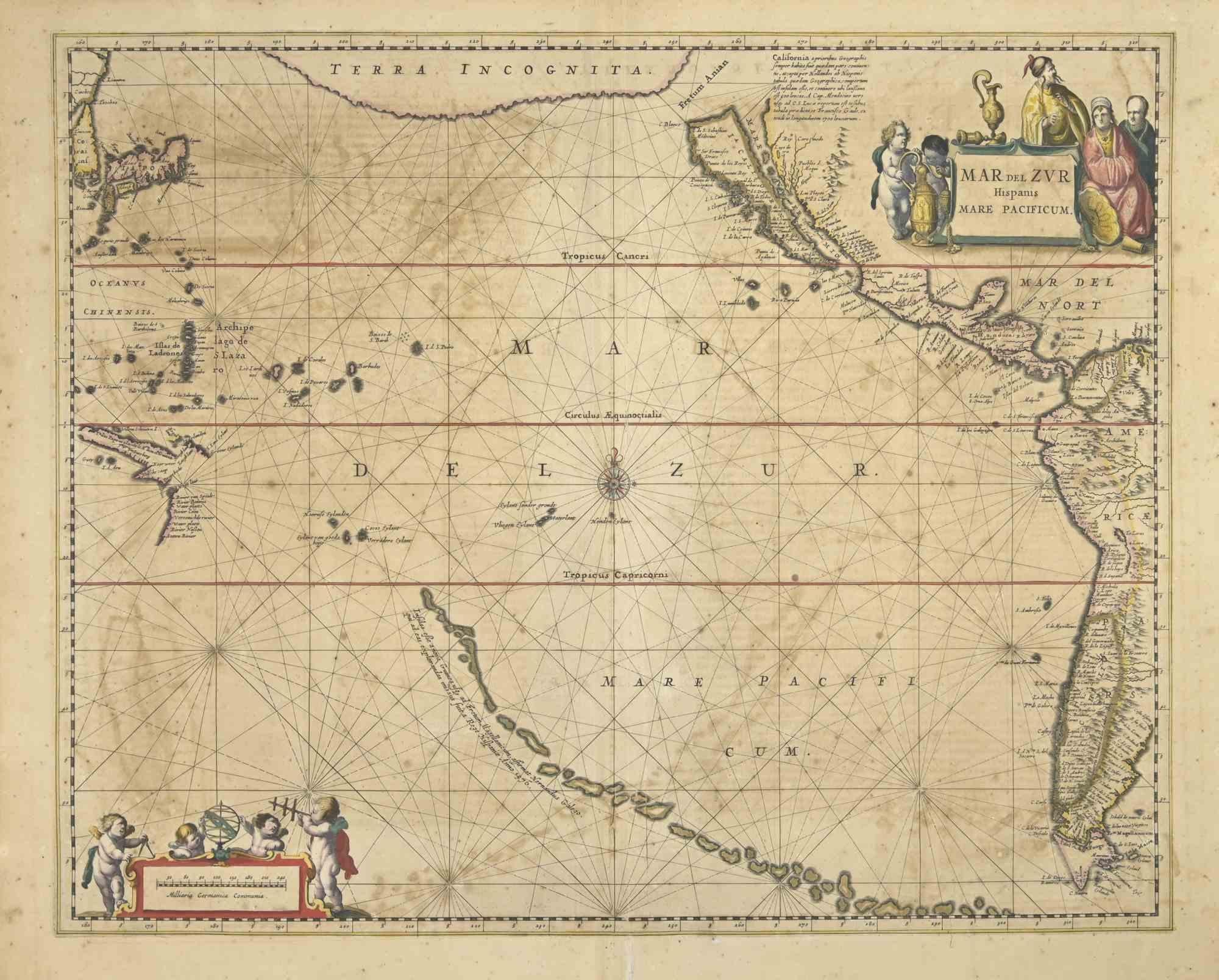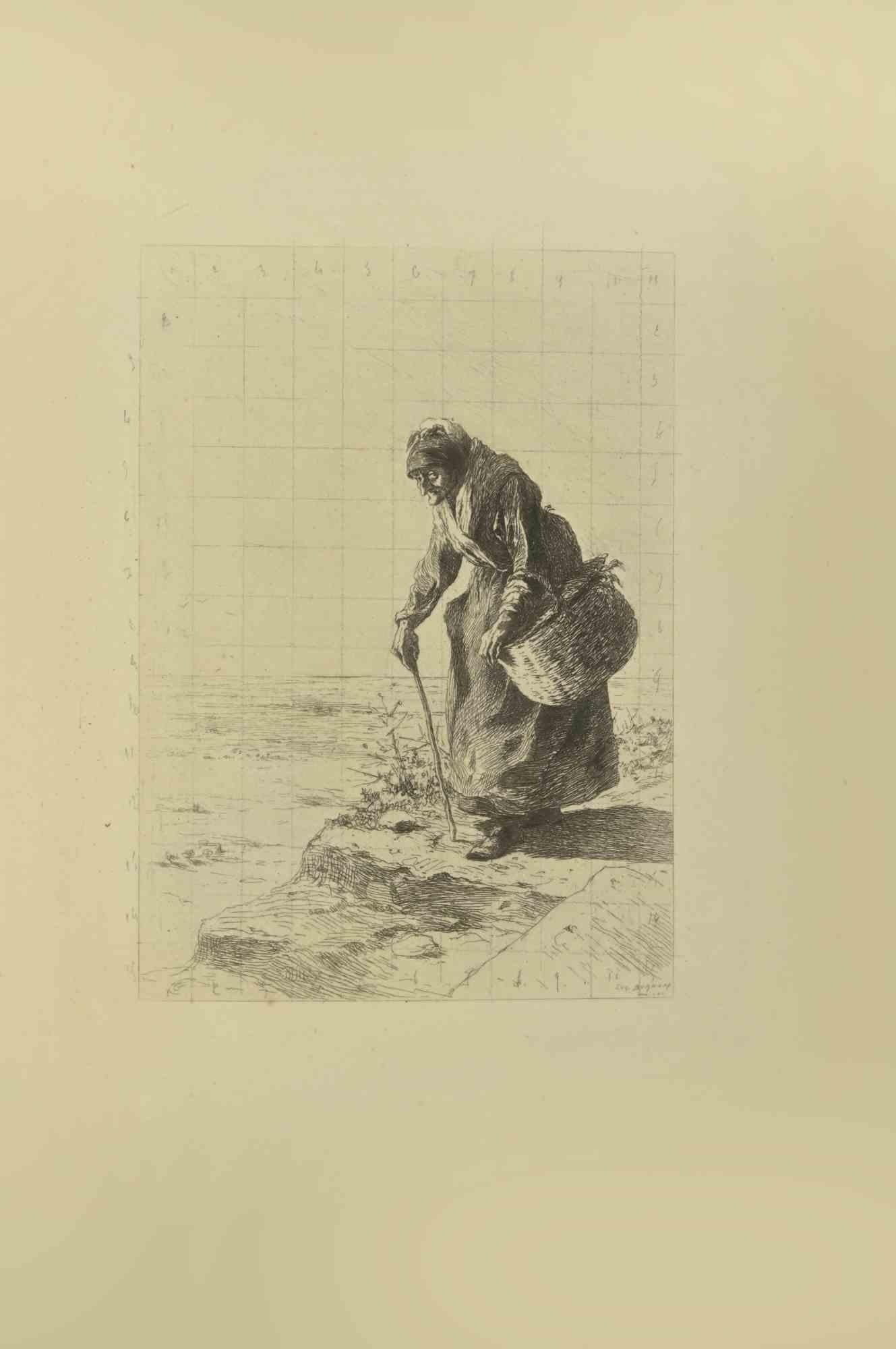Items Similar to Ex Libris Mantero - Original Etching by M. Fingesten - 1930s
Want more images or videos?
Request additional images or videos from the seller
1 of 2
Michel FingestenEx Libris Mantero - Original Etching by M. Fingesten - 1930s1930s
1930s
About the Item
Image dimensions: 10x9 cm
Original Ex libris realized for Gianni Mantero. Original Etching on paper hand signed in pencil. Includes passepartout.
Very good conditions.
Michel Fingesten
Michel Finkelstein, known as Fingesten, was born in 1884 in Buzkovice u Ostravy; he was a painter and engraver, who was famous particularly for his extraordinary production of Ex Libris (bookplates).
After studying at the Academy of Fine Arts in Vienna, and in Monaco with Franz von Stuck, who addressed him to the caricature and to the graphics of small size, Fingesten left Austria; he travelled all over the world, visiting Europe, the United States of America and the Oriental countries.
Fingesten’s stay in Berlin since 1913 was decisive for his contact with the world of the engraving. After his adhesion to the New Secession, Fingesten destroyed his previous pictorial production and he decided to dedicate himself to the dimension of the engraving; even if he preferred the graphics, he continued to see himself as a “painter”.
The German city was characterized by a very dynamic artistic atmosphere that stimulated Fingesten. The engravings of this artist were published since 1915 in files and books in limited edition.
Fingesten’s works were published also in the famous periodicals of the expressionist avant-garde, like “Genius” and “Marsyas”, with the artists and the writers most important of his age.
Considered as a genius of the Ex Libris, that became with him a big art of small size, Fingesten realised more over than 1.500 of these brands of property since 1915. Fingesten’s Ex Libris were nourishment for the bibliophiles, who glued the bookplates on the first page of theirs books to indicate the property and who traded these Ex Libris.
The Ex Libris is a genre that doesn’t have confines and that can’t be reduced to indicate the name of the owner on the book, on which it is glued.
It left his old function of simple heraldic sign of property, and it became almost the projection of the bibliophile’s personality.
Even if he didn’t fall in the eclecticism, Michel Fingesten used generously the medium of the quote, in the subject, in the form and in the style.
In the 20s, for example, his art oscillates between Otto Dix and George Grosz, of which he overcomes the social critique and the erotism, and Karl Arnold of which he beats the irony.
The Great Depression of 1929 and the rapid advance of the Nazism contributed in a significant way to the progressive isolation of the Czech painter and engraver.
In the spring of the 1935, Fingesten left Germany and went to Italy, where he settled in Trieste and Milan.
The collector Mantero remembers about Fingesten’s Italian stay that “he lived in a home without furnitures” in Via Chiaravalle 11.
Mantero, who was one of the most important Fingesten’s customers of Ex Libris, wrote: “I understood he had a difficult and poor life for absence of money, but he didn’t have ambition of a rich life, indeed he told me that the earnings to buy some bread and a glass of wine were enough for him”.
In that period, the main means of subsistence were the commissions of the collectors of Ex Libris, especially the collectors of Milan and Como, members of the circle of friends of the art merchant Luigi Filippo Bolaffio.
Also known as “Picasso of the Ex Libris”, Fingesten explored this artistic medium and he elevated it with new and powerful expressive resources.
When the Ex Libris was detached from its practical function, the Artist began to create Ex Libris also for fake customers, for “famous contemporary people”, poets, musicians, and since 1928, for political men.
The Ex Libris, realised with a lot of graphic techniques, like the etching, the drypoint and the lithography, has always (with the graphics of occasion) the signature of the Artist, that underlines the awareness of his valour.
An important chapter of the production of this Artist was dedicated to the erotic Ex Libris, that for their irony were understood with difficulty by people that didn’t belong to the circle of the Artist.
Some of the most secret and rare erotic works by Fingesten are linked to the commissions of Gianni Mantero.
The dominant element of these engravings is the sarcasm, that is sometimes connected to a gloomy irony, and to the presence of the death, that coincided with the war, particularly in the last years of the Artist existence.
In his compositions, Fingesten was a narrator of life and death, of sex and love, of nightmares, hopes, art and poetry. His narration wasn’t without the time and the space, but it was at the center of the contemporary dimension, in the 20s and 30s of the anguished Europe that was going to the ruin.
We can underline that the relationship between the Artist and the customer had an important role in the definition of the power of these graphic works; actually the creative energy, that was born from the contact between the Artist inspiration and the customer personality, generates a strong expressive freedom.
After his death, Michel Fingesten and his works were forgotten; today there is a new attention to this very important artist and to his visionary sign.
Bibliography
• N. Nechwatal, Michel Fingesten – Das graphische Werk, Coburg 1984
• A. Tomasetig, Michel Fingesten: dalla collezione Cauti una mostra di ex libris e grafica d’occasione, 2005
• A. Parik, The unknown Michel Fingesten, Praha 2008
This artwork is shipped from Italy. Under existing legislation, any artwork in Italy created over 70 years ago by an artist who has died requires a licence for export regardless of the work’s market price. The shipping may require additional handling days to require the licence according to the final destination of the artwork.
- Creator:Michel Fingesten (1884 - 1943, Italian)
- Creation Year:1930s
- Dimensions:Height: 11.82 in (30 cm)Width: 9.45 in (24 cm)Depth: 0.12 in (3 mm)
- Medium:
- Movement & Style:
- Period:
- Condition:Insurance may be requested by customers as additional service, contact us for more information.
- Gallery Location:Roma, IT
- Reference Number:
About the Seller
4.9
Platinum Seller
These expertly vetted sellers are 1stDibs' most experienced sellers and are rated highest by our customers.
1stDibs seller since 2017
6,768 sales on 1stDibs
Typical response time: 3 hours
- ShippingRetrieving quote...Ships From: Rome, Italy
- Return PolicyA return for this item may be initiated within 14 days of delivery.
More From This SellerView All
- Ancient Map - Zeilan - Etching by Johannes Janssonius - 1650sBy Johannes JanssoniusLocated in Roma, ITAncient Map - Zeilan is an ancient map realized in 1650 by Johannes Janssonius (1588-1664). The Map is Hand-colored etching, with coeval watercoloring. ...Category
1650s Modern Figurative Prints
MaterialsEtching
- Orbis Terrarum - Etching by Johannes Janssonius - 1650sBy Johannes JanssoniusLocated in Roma, ITAntique Map - Orbis Terrarum is an antique map realized in 1650 by Johannes Janssonius (1588-1664). The Map is Hand-colored etching, with coeval watercoloring. Good conditions with...Category
1650s Modern Figurative Prints
MaterialsEtching
- Antique Map - Mare Pacificum - Etching by Johannes Janssonius - 1650sBy Johannes JanssoniusLocated in Roma, ITMare Pacificum is an antique map realized in 1650 by Johannes Janssonius (1588-1664). The Map is Hand-colored etching, with coeval watercolorang. Good conditions with slight foxing...Category
1650s Modern Figurative Prints
MaterialsEtching
- Old Woman with Stick - Etching by Eugène Burnand - Late 19th centuryLocated in Roma, ITOld Woman with Stick is an etching realized by Eugène Burnand (1850-1921) in the Late 19th century. Signed on the plate. Good conditions with foxing. The artwork is realized thro...Category
Late 19th Century Modern Figurative Prints
MaterialsEtching, Engraving
- Map of Mar Del Nort - Etching by Johannes Janssonius - 1650sBy Johannes JanssoniusLocated in Roma, ITAntique Map -Mar Del Nort is an antique map realized in 1650 by Johannes Janssonius (1588-1664). The Map is Hand-colored etching, with coeval watercolorang. Good conditions with sl...Category
1650s Modern Figurative Prints
MaterialsEtching
- In The Garden - Etching by Eugène Burnand - Late 19th centuryLocated in Roma, ITIn The Garden is an etching realized by Eugène Burnand (1850-1921) in the Late 19th century. Signed on the plate. Good conditions with foxing. The artwork is realized through sh...Category
Late 19th Century Modern Figurative Prints
MaterialsEtching, Engraving
You May Also Like
- Nadia au regard attentifBy Henri MatisseLocated in London, GBAquatint on Marais wove paper Edition of 25 Signed and numbered 25/25 in pencil lower right Duthuit 794Category
Mid-20th Century Modern Prints and Multiples
MaterialsAquatint
- Fumeur à la Cigarette BlancheBy Pablo PicassoLocated in London, GBEtching and aquatint in colours, 1964, on Richard de Bas wove paper, signed in pencil and numbered 41/50 from the edition of 50, printed by Pennequin for Atelier Crommelynck, publish...Category
1960s Modern Figurative Prints
MaterialsEtching
- Fly Fishing, Saranac LakeBy Winslow HomerLocated in Storrs, CTFly Fishing, Saranac Lake. 1889. Etching, aquatint and burnishing. Goodrich 104. 14 1/4 x 20 5/8; sheet 18 1/2 x 24 1/2. Edition unknown but quite possibly intended 100; highest numb...Category
Late 19th Century American Modern Figurative Prints
MaterialsEtching
- Le Cocu Magnifique -- complete illustrated book with 12 original etchingsBy Pablo PicassoLocated in New York, NYAbout In-folio Oblong Dimensions : 29x39 cm. Paris Atelier Crommelynck 1968 Edition #41 of 200 copies including 12 original out-of-text etchings (7 etchings, 4 etchings and aquatint...Category
Mid-20th Century Modern Figurative Prints
MaterialsDrypoint, Etching, Aquatint
- Nu couché. Intérieur à la lampe vénitienneBy Henri MatisseLocated in London, GBHenri Matisse Nu couché. Intérieur à la lampe vénitienne 1929 Etching on Chine appliqué on Arches Velin paper, Edition of 25 Paper size: 28 x 38 cms (11 x 15 ins) Plate size: 9.1 x 1...Category
1920s Modern Figurative Prints
MaterialsEtching
- Homme dévoilant une Femme. (Man uncovering a woman).By Pablo PicassoLocated in Storrs, CTHomme dévoilant une Femme. (Man uncovering a woman). 1931. Drypoint. Bloch 138; Baer 203 B.d. Vollard Suite, plate 5. Printed by: Lacourie...Category
Mid-20th Century Modern Portrait Prints
MaterialsEtching





